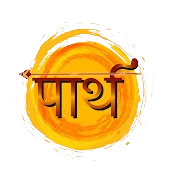
E-Books vs Print: What’s the Future of Reading?
The debate between e-books and print books has been ongoing since the dawn of digital publishing. With both formats offering distinct advantages, readers are often caught in a tug-of-war between the convenience of e-books and the tangible experience of print. As the publishing world continues to evolve, the question remains: what is the future of reading? Publishers like Parth Prakashan are embracing both formats, ensuring that readers can enjoy stories in the way that suits them best.
1. The Rise of E-Books
E-books have revolutionised the way people consume literature. With the ability to download entire libraries onto a single device, readers now have access to a vast collection of books at their fingertips. This convenience, paired with the ability to adjust font sizes and read in low light, has made e-books an attractive option for many.
E-books also offer:
Portability: You can carry thousands of books on your phone, tablet, or e-reader without the bulk of physical copies.
Instant Access: E-books can be purchased and downloaded instantly, allowing readers to dive into new releases or classics without waiting.
Affordability: Digital books are often more affordable than their print counterparts due to lower production and distribution costs.
2. The Enduring Appeal of Print
Despite the convenience of digital, print books continue to hold a special place in the hearts of many readers. There’s something irreplaceable about the tactile sensation of turning pages, the smell of fresh ink, and the visual satisfaction of a well-designed book cover. For some, reading a physical book is a cherished ritual that digital devices can’t replicate.
Print books offer:
Sensory Experience: The texture, weight, and smell of a print book create a more immersive reading experience.
No Eye Strain: Unlike screens, print doesn’t cause the eye strain or fatigue that comes from prolonged digital reading.
Emotional Connection: Print books often carry sentimental value. Whether it’s a gifted book or a beloved classic, the physical presence of a book can evoke strong memories and connections.
3. E-Books and Print: A Co-Existence
Instead of asking whether e-books or print will prevail, perhaps the future of reading lies in the coexistence of both formats. Readers don’t have to choose sides; many enjoy both, switching between formats based on convenience, mood, or specific needs.
For instance:
Commuters may prefer reading e-books during their travels, while opting for print at home when they can fully immerse themselves in a story.
Students might use e-books for quick research and search functions, while still relying on print for deeper reading and note-taking.
4. The Environmental Impact
One factor influencing the e-book vs. print debate is the environmental impact of each format. E-books are often seen as more eco-friendly since they eliminate the need for paper, ink, and shipping. However, the energy consumption involved in the production and disposal of e-readers, as well as digital data storage, complicates this narrative.
On the other hand, sustainable printing practices such as using recycled paper, soy-based inks, and responsible forestry are helping reduce the environmental footprint of print books.
5. The Future of Reading: A Hybrid Approach
The future of reading is not about choosing sides but about embracing the strengths of both formats. E-books and print books will likely continue to exist side by side, catering to different reading preferences and situations. Advances in technology will only enhance this hybrid approach, with digital platforms becoming more interactive and immersive, while print books may evolve in design and production quality to maintain their special appeal.
The debate between e-books and print doesn’t need to be resolved; instead, it’s about embracing the diversity of reading experiences that both formats offer. As readers, we can enjoy the best of both worlds whether it’s the portability of an e-book or the tactile joy of holding a printed volume.
Publishers like Parth Prakashan are committed to giving readers these choices, ensuring that stories remain accessible, engaging, and relevant, regardless of how they are consumed. So, whether you prefer swiping through pages on your e-reader or getting lost in a paperback, the future of reading is bright, varied, and filled with possibilities.
